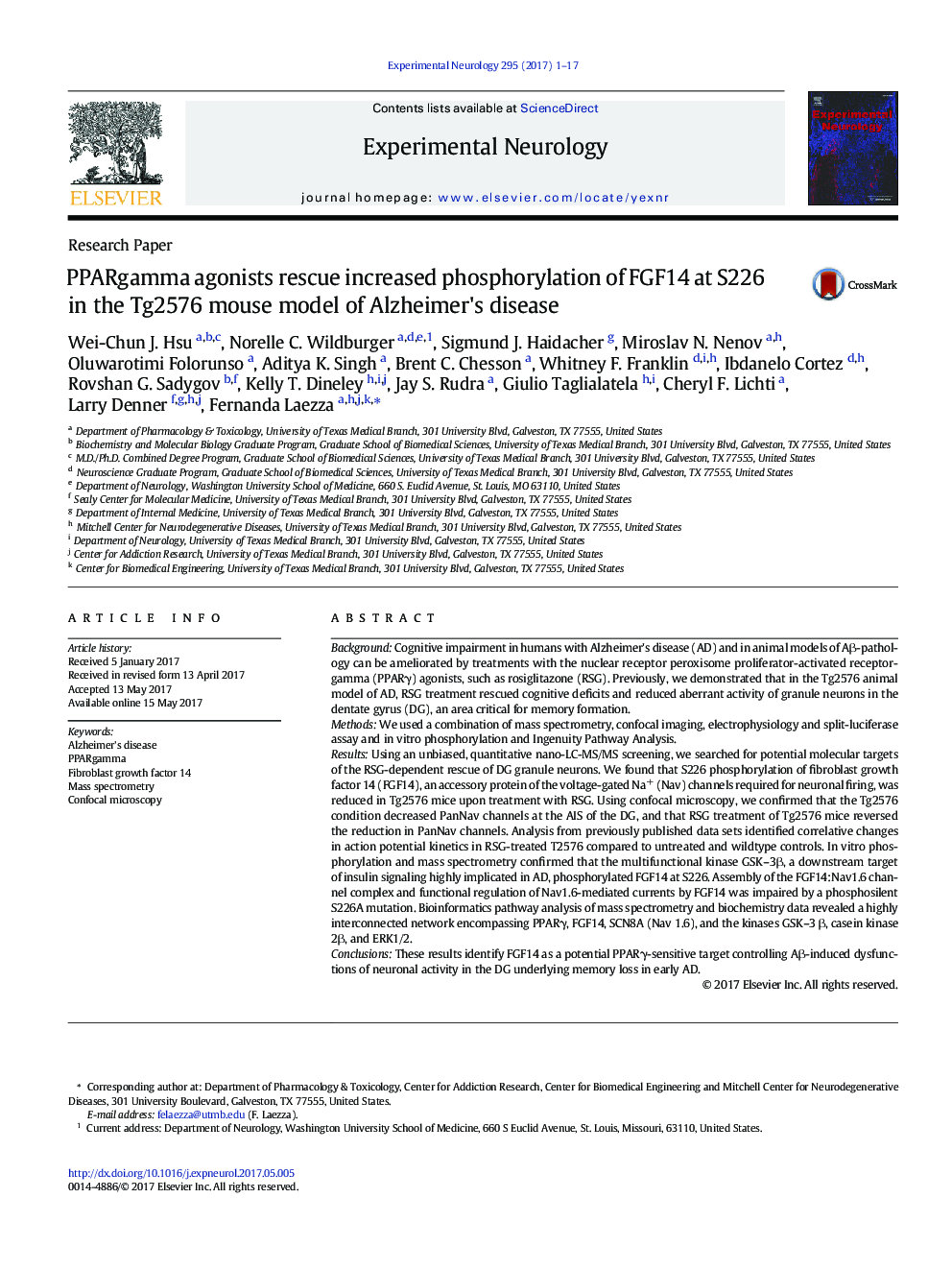| کد مقاله | کد نشریه | سال انتشار | مقاله انگلیسی | نسخه تمام متن |
|---|---|---|---|---|
| 5629102 | 1580144 | 2017 | 17 صفحه PDF | دانلود رایگان |

- Phosphorylation of FGF14 at S226 in Tg2576 animals is reduced by rosiglitazone (RSG).
- Tg2576 condition decreases PanNav channels at AIS, which is reversed by RSG.
- GSK-3β phosphorylates FGF14 at S226.
- Assembly of FGF14:Nav1.6 channel complex is reduced by a S226A mutation
- Functional regulation of Nav1.6-mediated currents was impaired by a S226A mutation.
BackgroundCognitive impairment in humans with Alzheimer's disease (AD) and in animal models of Aβ-pathology can be ameliorated by treatments with the nuclear receptor peroxisome proliferator-activated receptor-gamma (PPARγ) agonists, such as rosiglitazone (RSG). Previously, we demonstrated that in the Tg2576 animal model of AD, RSG treatment rescued cognitive deficits and reduced aberrant activity of granule neurons in the dentate gyrus (DG), an area critical for memory formation.MethodsWe used a combination of mass spectrometry, confocal imaging, electrophysiology and split-luciferase assay and in vitro phosphorylation and Ingenuity Pathway Analysis.ResultsUsing an unbiased, quantitative nano-LC-MS/MS screening, we searched for potential molecular targets of the RSG-dependent rescue of DG granule neurons. We found that S226 phosphorylation of fibroblast growth factor 14 (FGF14), an accessory protein of the voltage-gated Na+ (Nav) channels required for neuronal firing, was reduced in Tg2576 mice upon treatment with RSG. Using confocal microscopy, we confirmed that the Tg2576 condition decreased PanNav channels at the AIS of the DG, and that RSG treatment of Tg2576 mice reversed the reduction in PanNav channels. Analysis from previously published data sets identified correlative changes in action potential kinetics in RSG-treated T2576 compared to untreated and wildtype controls. In vitro phosphorylation and mass spectrometry confirmed that the multifunctional kinase GSK-3β, a downstream target of insulin signaling highly implicated in AD, phosphorylated FGF14 at S226. Assembly of the FGF14:Nav1.6 channel complex and functional regulation of Nav1.6-mediated currents by FGF14 was impaired by a phosphosilent S226A mutation. Bioinformatics pathway analysis of mass spectrometry and biochemistry data revealed a highly interconnected network encompassing PPARγ, FGF14, SCN8A (Nav 1.6), and the kinases GSK-3 β, casein kinase 2β, and ERK1/2.ConclusionsThese results identify FGF14 as a potential PPARγ-sensitive target controlling Aβ-induced dysfunctions of neuronal activity in the DG underlying memory loss in early AD.
Journal: Experimental Neurology - Volume 295, September 2017, Pages 1-17